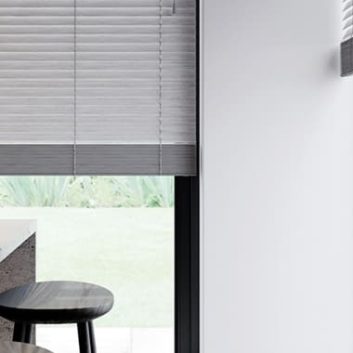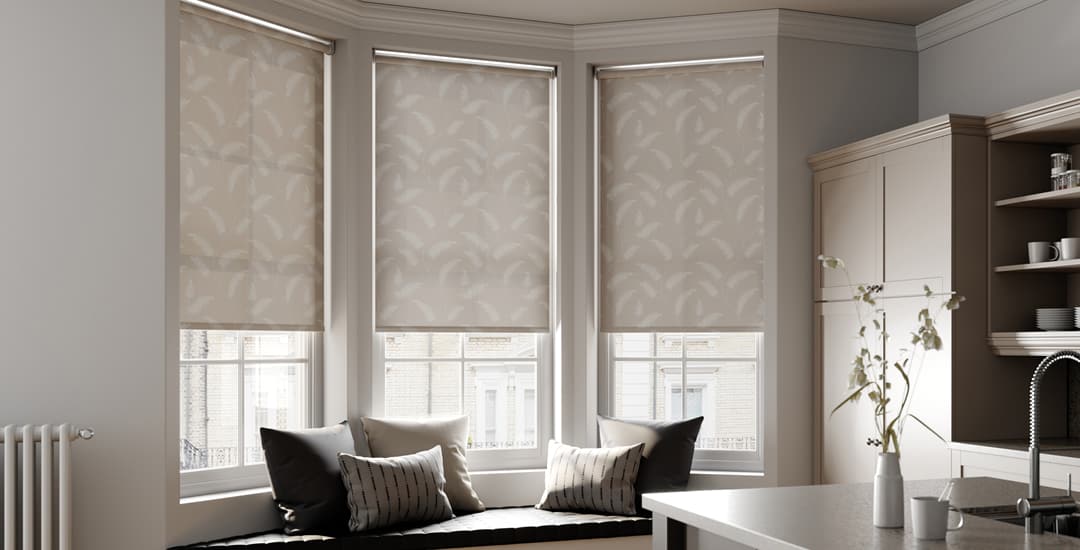
Which way should a roller blind be rolled, over or under? This depends on any potential challenges of your window plus your own aesthetic preferences.
There’s not a right and a wrong way to hang a roller blind in terms of the direction/fall of the blind’s fabric, but more of an industry norm that has some valid/functional exceptions.
If I tell you that we here in the blinds industry refer to the two options (under or over) as “standard roll” and “reverse roll” respectively, I am sure that you will immediately feel that I’ve significantly strengthened the argument for one above the other.
Both rolling the blind over and under are ok/can be done/don’t look awful or incorrect and will roll with perfect functionality and no issues, but the “standard roll” option is the norm or default, and the “reverse roll” option is less common/generally undertaken only upon request and for specific reasons.
About those toilet rolls…
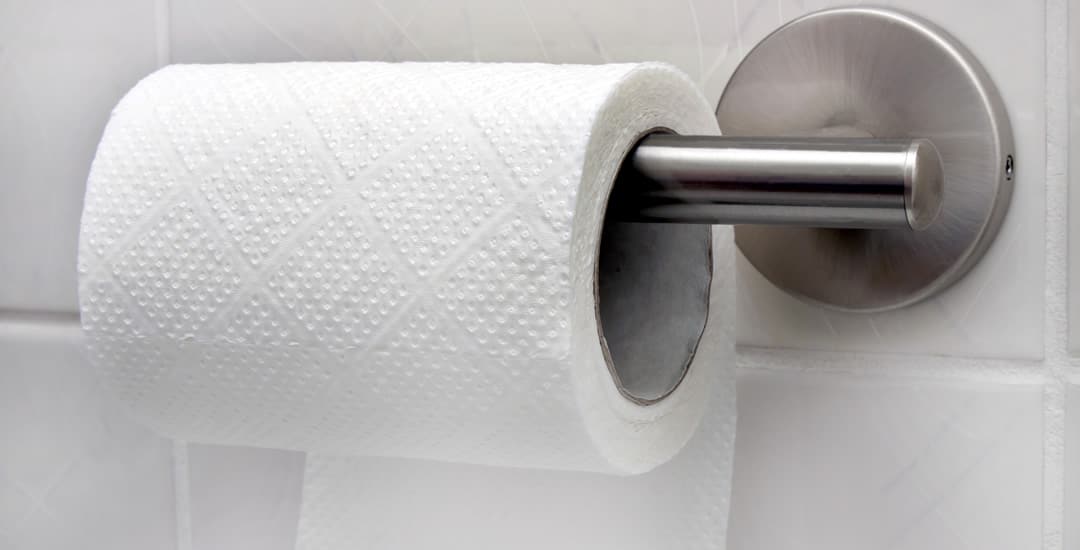
The toilet paper thing then? Well, you might logically think that toilet paper logic can or should carry over to roller blinds, and that your preferred, or the most common, orientation for toilet rolls should also apply to roller blinds.
Everyone has an opinion on whether or not the toilet roll should be hung with the paper coming off over or under the roll, after all; and if you and your other half can’t agree on that, well, I strongly suggest that you steer clear of buying roller blinds for your home then.
Here’s the thing though. Toilet rolls and roller blinds aren’t the same thing. I mean yes, they’re both types of fabric hung on rolls designed to perform a functional task, but you can’t use toilet rolls and roller blinds interchangeably. Please.
Ergo, toilet paper logic cannot be applied to roller blinds; and the correct (fight me) way to hang your toilet roll might be the incorrect way to hang your roller blind. Or not. Keep reading to learn which way a roller blind should be rolled, and why toilet paper logic cannot be used to determine this with any degree of accuracy.
Questions covered:
- 1. Which way should a roller blind be rolled?
- 2. What is the difference between standard and reverse roller blinds?
- 3. Can you change the direction of a roller blind once you’ve bought/hung it?
- 4. Should a roller blind go over or under the roll if you want to achieve a full blackout in your room?
1. Uh, what do you mean “which way” should a roller blind be rolled?
Literally I’m referring to the way or direction in which the fabric of the roller blind comes off the roll; over the top of the roll so that there’s a gap the width of the tube between the fabric and the glass, or underneath the roll so that the fabric lies as close to the window as possible without adding the distance added by the width of the roll itself.
If you don’t have a roller blind in front of you and can’t envision what I mean; go and have a look at some toilet rolls… I’m talking about the type hung neatly from a roll on the wall in this instance, not a multipack on the shelf in Tesco’s nor a functional roll dumped unceremoniously on top of the bog.
The paper on a toilet roll hung on the wall will either come over the top of the roll or under it; and most of us instinctively hang toilet roll in the “over” position, both because this looks somehow neater or more proper and because (not sure there have been scientific studies to back this up but most will agree) the toilet roll seems to roll better/allow the paper to come off the roll more smoothly in this position than if you tug from the underneath and back of the roll instead.
Or actually, I could just give you a blinds visual instead:
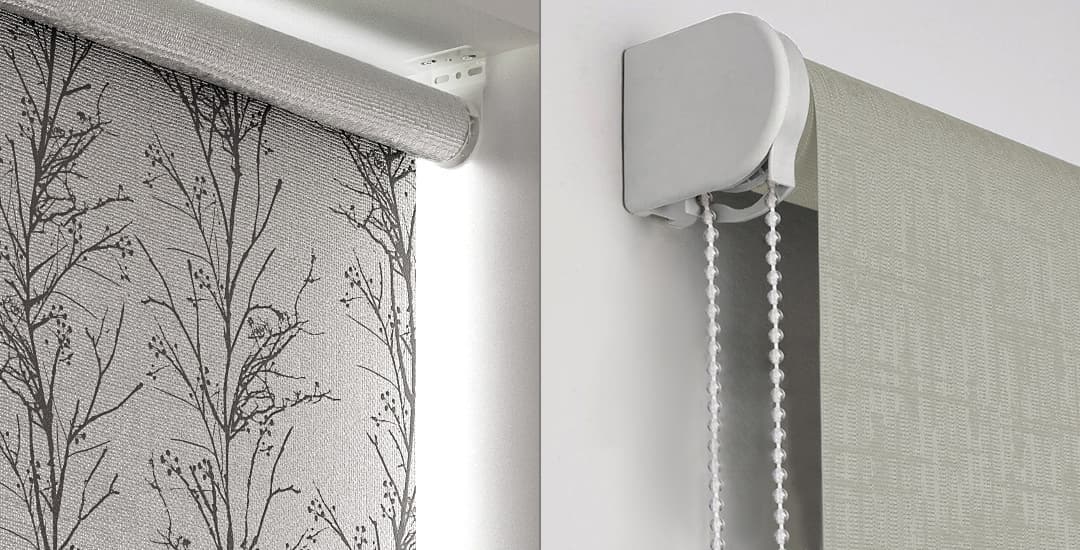
Why toilet paper logic cannot be applied to determine which way a roller blind should be rolled
Quick plot twist I have to get out of the way, btw; if you’re following toilet paper logic to determine which way your blind should roll, don’t. Assuming that you’re not an animal/deliberately trying to be contrary, you probably think that the “right” way to hang a toilet roll is in the over/nearest to you position. However, if you assume then that this configuration would then naturally also apply to roller blinds too and that the over position would be what we call the “standard roll;” sorry, no.
“Standard roll” position for roller blinds is the under position, and this is the default or industry norm unless requested to the contrary, whilst “reverse roll” position for roller blinds is the over or “correct” way to hang a toilet roll, but a less common albeit potentially essential in some cases way to hang a roller blind.
2. What is the difference between standard and reverse roller blinds?
Roller blinds (the made to measure kind, not the “readymade comes in a box from Argos and may or may not fit your window” kind) can be made in either standard roll or reverse roll configurations.
What’s the difference between standard roll and reverse roll roller blinds? Just the way we roll the fabric onto the top tube when we put the blind together! This is why we call the configuration/rolling direction of a blind “standard roll” and “reverse roll” respectively, rather than “standard roller blind” and “reverse roller blind” instead. They’re the same blind, made the same way; the difference between standard and reverse roll is literally just whether we roll the fabric clockwise or anticlockwise while we’re putting it together for you.
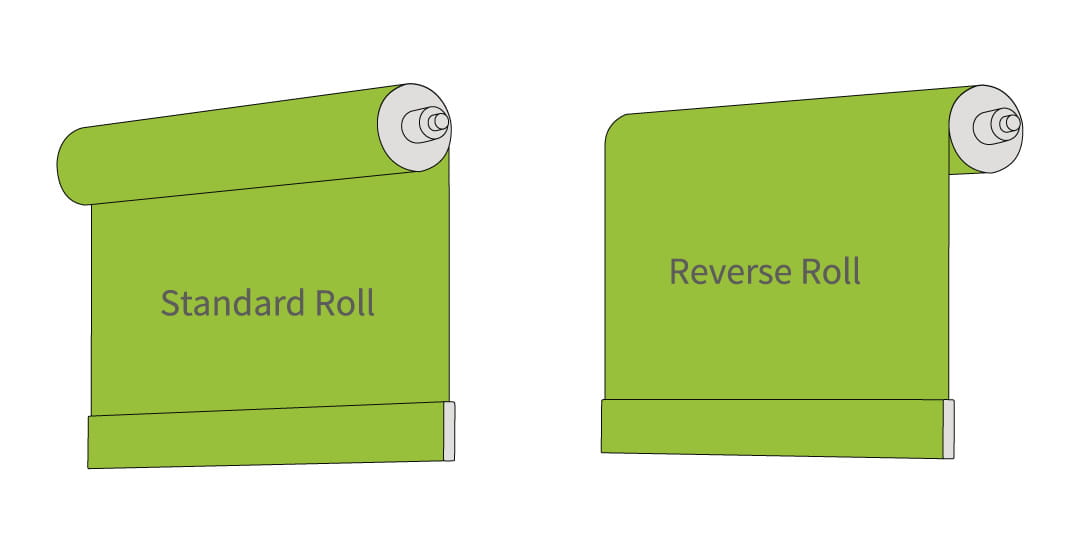
3. Can you change the direction of a roller blind once you’ve bought/hung it?
Yes, or at least, you can with our roller blinds because you can get to all of the parts and areas of the blind that you need to access to be able to do this. I can’t speak for all blinds/makers, but I think that this is the norm for the majority.
So, how can you change the direction of a roller blind once you’ve bought it and/or already hung it over the window?
All you need to do is unroll the fabric of the blind to its full extent using the control chain, until you can actually see the aluminium metal of the top tube that the blind’s fabric rolls around. Then, hold the bottom bar of the fabric to keep the fabric taut and straight, and simply pull the chain in the other direction, and keep winding until the fabric had wrapped itself fully around the roll but the other way.
Your roller blind now works in exactly the same way it did before, but with the fabric going the other way. Oh, by the way, when you’ve done this, you’ll find that you need to pull the control chain in the opposite direction to how you did previously to open and close the blind too.
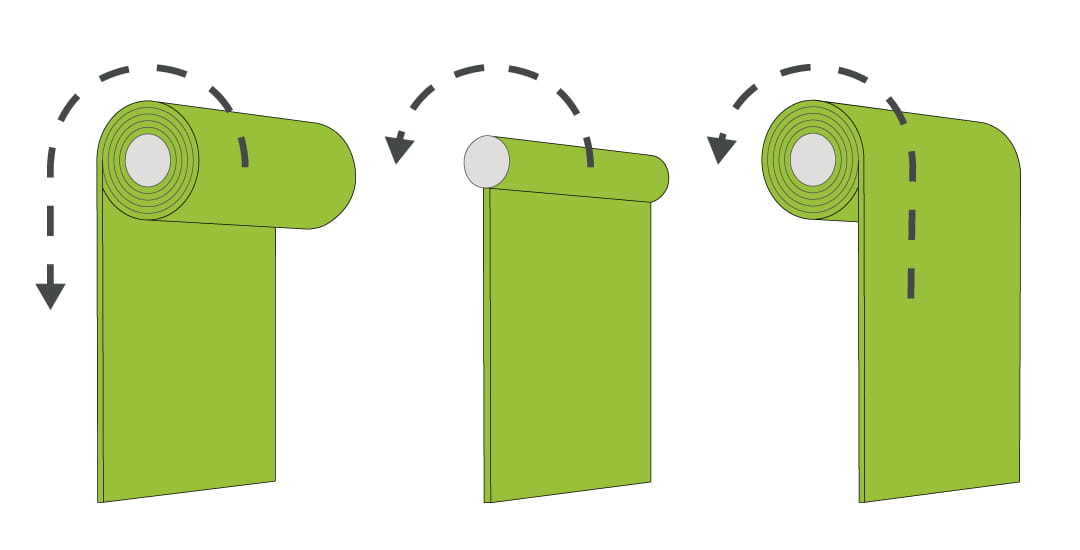
Bonus: Relationship advice from Polly.
If you have time on your hands and you’re feeling super-petty and/or you have actual rows about the direction they hang the toilet roll in when they replace the roll, may I suggest moving around the home when they’re not in and reversing the hang of all of your roller blinds, for shits and giggles?
Odd that the fact that this is absolutely the sort of thing that I would do and the fact that I live alone seem to be inextricably linked…
4. Which way should a roller blind be rolled if you want to achieve a full blackout in your room?
So, you have choices, and which one you make might be contingent on what you’re trying to achieve with your blinds, aside from using them as a new weapon in your arsenal of “things to use to annoy your partner.”
For instance, if you bought blackout blinds and want to achieve as near to a full blackout with them as possible, should a roller blind go over or under the roll? Under, in this case; or in the standard roll position, which is the default.
This is because the closer the fabric of the blind is to the glass (for blinds hung inside of the window recess) or wall (for blinds hung outside of it) the smaller any potential gaps will be and so, the smaller the amount of light that can creep around the sides of the blind.
This is standard roll position.
And if your partner’s sleep is really important to them, unless you actually do really dislike them or are keen to bring that divorce discussion to the table sooner rather than later, maybe leave changing the direction of the roller blinds in the bedroom to the reverse roll position as part of your crusade to win the toilet paper war…
Should a roller blind go over or under the roll if you’ve got sticky-outy window handles or lots of sparkly ornaments hanging in front of the glass?
If your windows have handles that stick out or if there are any other potential obstructions or add-ons around or on the window glass (dreamcatcher, suncatcher, that kind of thing), should the roller blind go over or under the roll? In this case, your best choice is over, or in the reverse roll position. The one that’s right for the toilet roll but less common for roller blinds.
Which way should a roller blind be rolled if I’m keen to protect my privacy from prying eyes outside?
If your roller blind is fully closed, people outside (even those standing staring straight in directly on the other side of the glass like something out of a horror film) aren’t going to be able to see anything meaningful of what or who is inside with either standard or reverse rolled blinds.
However, because the under position or “standard roll” places the blind’s fabric closer to the glass or wall and leaves narrower or possibly pretty much non-existent gaps, standard roll is the best approach to minimising any potential, even tiny, line of sight.
Should a roller blind go over or under if I want the blind to help insulate the room?
All blinds insulate the window they’re on to an extent, and buying low cost thermally efficient roller blinds to boost the impact of this is a very environmentally sound and wallet-friendly idea.
If you go to the trouble of buying thermal insulating roller blinds, you’ll probably want to maximise their efficacy when you hang them; so, should a roller blind go over or under to maximise its insulating properties? Under once more, in the standard roll position; the closer the blind’s fabric is to the glass, the smaller any gaps for heat to escape through/cold to enter through become.
Which way should a roller blind be rolled in a conservatory?
In most conservatories, some or many of the windows have opening handles that protrude into the room, plus you don’t have the usual options of top fixing or side fixing the blind as you normally would within a standard window’s recess.
In this situation, you should fit your roller blinds in the over or reverse roll position, to allow clearance for the handles on the windows.
Should a roller blind go over or under if I have inward-opening windows or tilt-and-turn windows?
If your windows open into the room and/or you have windows that can be tilted inwards to be partially open, your best choice is to have your roller blind in the over or reverse roll position. Depending on how widely you open your window or for tilt and turn windows, how far the window protrudes into the room, your roller blind might not lie completely straight on the vertical when the window is open and the blind is closed; but if you hang your blind over the recess on tilt and turn windows and also hang it in reverse roll, it almost certainly will be.
Even on windows that open a ways into the room and/or where you hang the blind inside of the recess with inward-opening windows, blinds hung in the over or reverse roll position will offer a smoother silhouette and give better visuals when closed over the open window than one in the standard roll position.
If you never have a window open while your blinds are closed, none of these points really apply.
In closing; which way looks best?
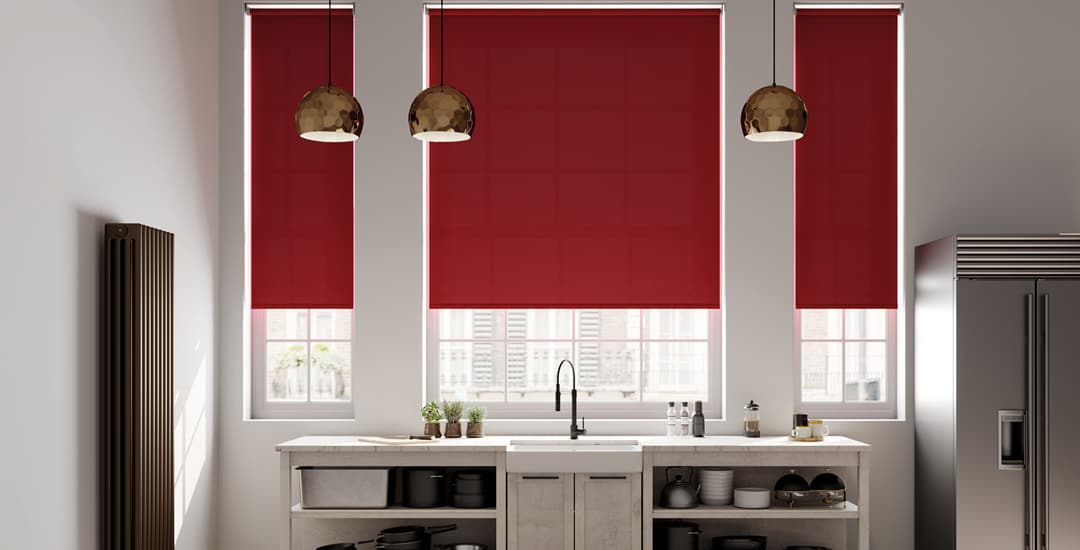
If you have a functional consideration like those above to bear in mind, the correct direction for your roller blind based on meeting this need is what will look best.
However, if it’s much of a muchness or just down to an aesthetic choice, here are a few points in closing:
- The under the roll or “standard roll” configuration is the default or industry norm for how roller blinds are supplied, largely because this is the most common/classic look for a roller blind. This is what people generally expect to see and as a result of this, tend to instinctively think of as “right” or better.
- On the flip side, the flip side; by which I mean, the back of the fabric of a roller blind. This is sometimes a different colour to the front of it, particularly if you have blackout or thermally insulating fabric on the back of the blind, or the blind is patterned. In this case, the fabric that is visible when wound around the blind’s tube will be the back of the fabric, and so, will be different to the colour/pattern of the rest of the blind, which some people don’t like; others don’t even notice or really register this at all.
- With over the roll roller blinds or the “reverse roll” configuration, you don’t see the back of the fabric as the drop of the fabric is at the front of the roll; so if it is a different colour to the front of the fabric, nobody sees or knows!
- That said, there’s a wider (tube-width) gap between the blind and the glass or wall with reverse roll or over the roll, which some people aren’t keen on.
- And finally, and honestly I should know better by now than to include certain people in the building in my market research questions when it comes to the aesthetics of blinds…
Some people just think that the roller blind fabric rolling off the front “looks wrong,” and they will choose that hill to die on, even if they cannot provide any justification for this viewpoint. Simples.

